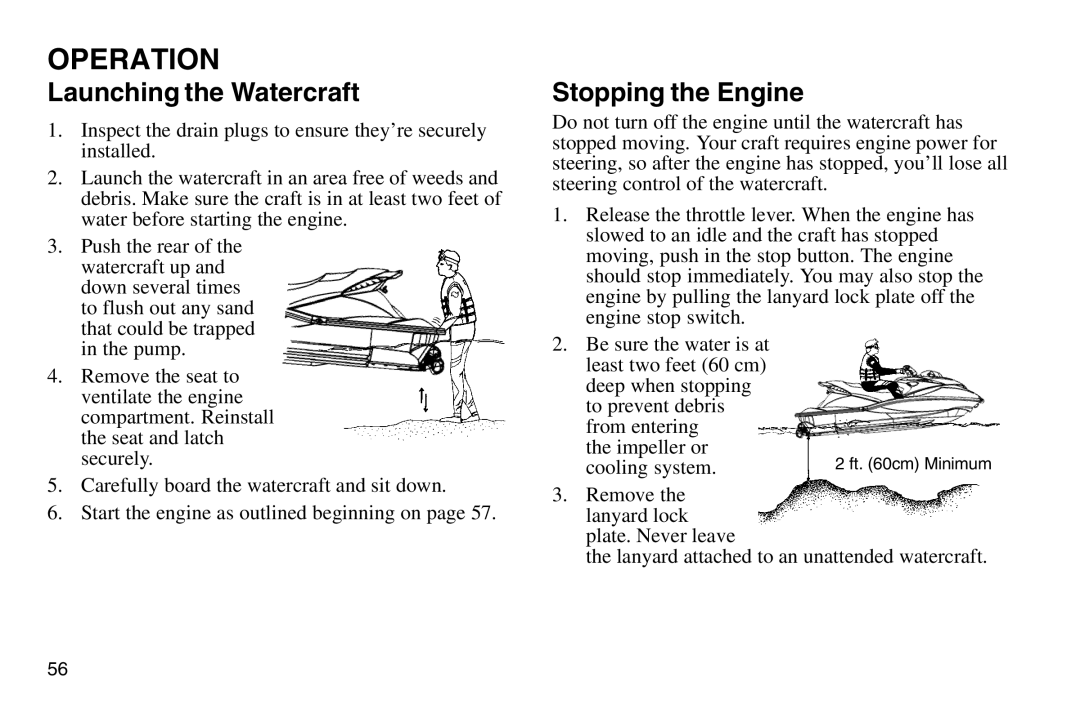
OPERATION
Launching the Watercraft
1.Inspect the drain plugs to ensure they’re securely installed.
2.Launch the watercraft in an area free of weeds and debris. Make sure the craft is in at least two feet of water before starting the engine.
3.Push the rear of the watercraft up and down several times to flush out any sand that could be trapped in the pump.
4.Remove the seat to ventilate the engine compartment. Reinstall the seat and latch securely.
5.Carefully board the watercraft and sit down.
6.Start the engine as outlined beginning on page 57.
Stopping the Engine
Do not turn off the engine until the watercraft has stopped moving. Your craft requires engine power for steering, so after the engine has stopped, you’ll lose all steering control of the watercraft.
1.Release the throttle lever. When the engine has slowed to an idle and the craft has stopped moving, push in the stop button. The engine should stop immediately. You may also stop the engine by pulling the lanyard lock plate off the engine stop switch.
2.Be sure the water is at least two feet (60 cm) deep when stopping to prevent debris from entering
the impeller or
cooling system. | 2 ft. (60cm) Minimum |
3.Remove the lanyard lock plate. Never leave
the lanyard attached to an unattended watercraft.
56
